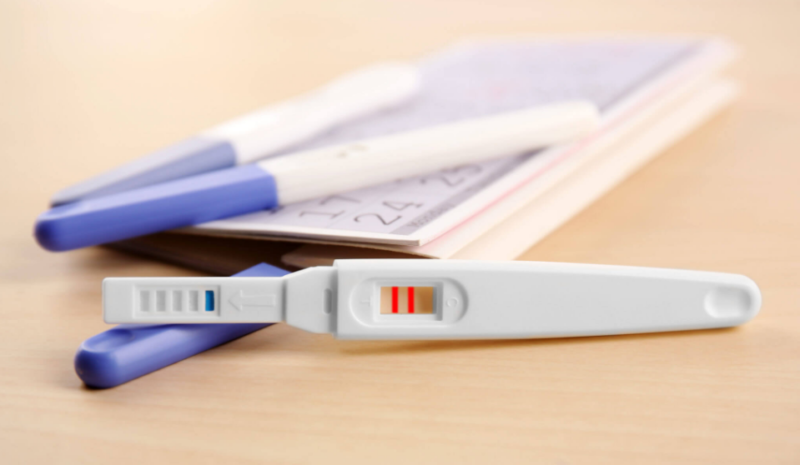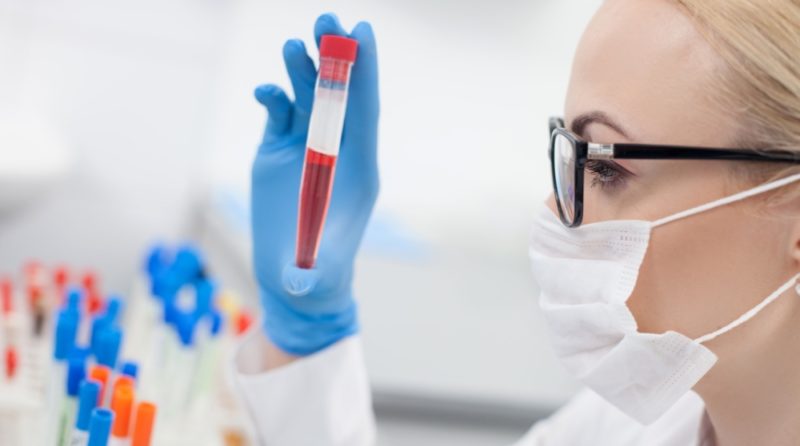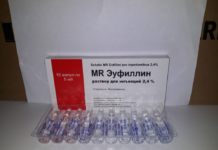Modern medicine allows you to accurately determine the presence of a developing fetus. A blood composition test for the “pregnant hormone” provides an opportunity to calculate the level of hCG by weeks of pregnancy, diagnose latent abnormalities and determine the risk of miscarriage in time.
Material Content:
What is hCG
Human chorionic gonadotropin is a hormone that is formed in a physically healthy person exclusively during the period of growth and development of the fetus. A fertilized egg and placenta tissue are responsible for its formation. Before conception, it is not possible to identify the hormone in question.
Gonadotropin includes beta and alpha units. To diagnose pregnancy, the first is revealed, since it is they that are produced during the formation of the embryo. Beta units are formed in the body 6 days after the fertilization of the egg, after childbirth they are removed from the body in a few days.
HCG is required in order to:
- prevent the loss of the corpus luteum and activate the formation of estrogen and progesterone at the beginning of embryo development;
- activate the adrenal glands and genital glands of the fetus;
- prepare the woman’s body for the adoption of the embryo;
- activate the formation of testosterone in the body of the male fetus.
The volume of the hormone in the blood plasma does not allow to determine the exact duration of pregnancy.
Norm during pregnancy
The level of hCG by weeks of pregnancy from conception is determined after the formation of the zygote by examining the blood.A value from 5 to 25 units does not allow to accurately determine the presence of an embryo and requires additional sampling of the material after a few days.
Accurate diagnosis of pregnancy is acceptable for blood donation 10 to 11 days after fertilization or for urine analysis 14 days after conception. A plasma study allows you to get a more reliable result, since the level of hCG in it is much higher.
With the safe development of the embryo, the hormone levels double every couple of days. From the second half of the first trimester, it may take 2 times longer to increase hCG values.
After a third of pregnancy, the volume of hCG gradually decreases and acquires stable values until delivery.
The hCG rate is calculated in international units per 1 ml of collected blood.
Values below 5 mU / ml indicate the absence of a fertilized egg, with values over 25 units, the specialist fixes the conception and development of the embryo.
If the result of a blood test for hCG shows values in the range of 1000 - 2000 units, transvaginal ultrasound diagnosis should show the presence of a fetal sac. With rates less than 2000 mU / ml, the normal development of the fetus can be diagnosed only with several studies. The result of ultrasound can not be considered reliable.
The result of hCG cannot serve to determine the exact period of development of the fetus, since its indicators can vary depending on the course of pregnancy and the individual characteristics of the woman’s body.
What are the deviations and their causes?
The level of hCG in the urine and blood, which has deviations from the norm, indicates the possibility of an unsuccessful outcome.
An excessive increase in the amount of the hormone can report a multiple pregnancy, as well as about:
- toxicosis;
- pathologies of the fetus;
- problems with the female body, for example, gestosis;
- exceeding the duration of pregnancy;
- abnormalities of the endocrine system.
Also, chorionic gonadotropin can pathologically increase after IVF or when taking histogenic medications.
If abnormal values are found, the specialist has the right to prescribe additional manipulations, including ultrasound diagnostics.
Low hormone levels, most often, are the result of erroneous determination of the duration of pregnancy.
A rapid decrease in the level of hCG can occur during ectopic pregnancy, as well as with:
- high risk of spontaneous abortion;
- fetal death inside the womb;
- acute uteroplacental insufficiency.
A test to establish the volume of chorionic gonadotropin can give false results, therefore, if an abnormality is detected, it is necessary to retake the analysis after a few days.
When to donate blood for research
To determine the presence of a fertilized egg, you can take the material to determine the level of the hormone of pregnant women 7 days after the formation of the zygote, but at this time the indicators may not be correctly determined. To obtain an accurate result, you need to contact a specialist with a delay of menstrual bleeding in 1 - 2 days.
Planned blood sampling for chorionic gonadotropin is performed on the dates:
- 11 - 13.5 weeks;
- 16 - 17.5 weeks.
To identify an ectopic pregnancy, the analysis must be taken before the day of the presumed menstruation 3-4 times with an interval of several days. With a stable increase in indicators, pregnancy is considered normal.
Preparation for the procedure
To get the most accurate results of the study, a woman is advised to adhere to a strict diet the day before the procedure. A complete rejection of fatty and fried foods, as well as drinks containing alcohol, is shown.
On the day of the procedure, it is forbidden to use any drinks and food, with the exception of clean water.
Also, before the procedure and on the day of its implementation, it is required to refrain from physical and emotional stress.An hour before the procedure should refrain from cigarettes and rest. If it was not possible to follow the recommendations presented, it is recommended to transfer the blood sampling to another day.
If a pregnant woman is taking medications, you should notify the specialist who is diagnosing this.
For emergency research, refusal of food and drinks should be made 4 - 5 hours before blood sampling for analysis.
HCG analysis and interpretation of the results
To diagnose conception, a general analysis of blood plasma for hCG is prescribed. Research material is taken from a vein. To identify the volume of the hormone takes 3 to 4 hours. After receiving the results, the hormone level is prescribed on the form, which can be compared with normative tables to find out if they correspond to the norms.
If you independently detect deviations, you should not panic. Decryption of analyzes should be done exclusively by a specialist.
HCG growth chart for pregnancy by week
The table below shows the approximate values of “pregnant hormone” by weeks from the end of the last menstrual bleeding.
| Pregnancy duration | Chorionic gonadotropin in honey / ml |
|---|---|
| 21 days | 5 - 51 |
| 28 days | 5 - 427 |
| 35 days | 19 - 7339 |
| 6.5 weeks | 1079 - 56499 |
| 7 - 8 weeks | 7649 - 228999 |
| 8.5 - 11.5 weeks | 25699 - 287999 |
| 12.5–16.5 weeks | 13299 - 253999 |
| 17 - 24.5 weeks | 4059 - 165399 |
| More than 24.5 weeks | 3640 - 117000 |
The presented values can serve only as a guide for the approximate gestational age, since each woman has an individual rate of increase in the hormone in the blood. It is not the concrete meaning that matters, but the tendency of its change.
During pregnancy, a woman should especially carefully monitor her health and take all the necessary tests. But if abnormalities are found, one should not engage in self-correction of the problem, so as not to provoke a deterioration in the condition of the fetus and mother.


















